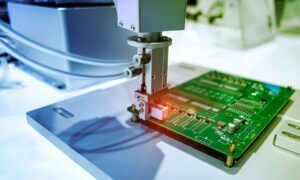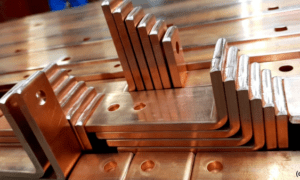Think about the last time a sweltering summer heatwave hit. You probably didn’t think twice before walking inside, enjoying the cool, dry air, and thanking your air conditioner. We take modern home comfort completely for granted. But the HVAC system humming away quietly in your closet or attic is the result of over a century of incredible technological innovation. It has evolved from a simple, clunky machine into a sophisticated, intelligent system that does far more than just cool the air.
The journey from basic temperature control to the high-efficiency systems we have today is a story of constant improvement, driven by the demand for better performance, lower energy costs, and a healthier indoor environment. Understanding this evolution gives you a real appreciation for the complex machine you rely on every day, and for the skilled HVAC technicians who keep these advanced systems running at peak performance.
Here’s a look at the key technological leaps that have transformed the HVAC unit over the years.
The Relentless Pursuit of Efficiency
The biggest story in the evolution of HVAC is the dramatic improvement in energy efficiency. Early air conditioners were power-guzzling beasts that could send an electric meter spinning. The technology that changed everything was the development of more advanced compressors and a way to measure their performance.
Today, an air conditioner’s efficiency is measured by its SEER (Seasonal Energy Efficiency Ratio) rating. The higher the SEER number, the less energy the unit uses to cool your home. This is a core metric used by programs like ENERGY STAR to certify high-performance equipment. This leap in efficiency was made possible by the following innovations:
- Variable-Speed Technology: Older units had one speed: ON. They would blast cold air until the thermostat was satisfied, then shut off completely. Modern systems use variable-speed compressors and fans that can run at lower or higher speeds, much like the accelerator in your car. This allows the system to make tiny, continuous adjustments to maintain a consistent temperature, using far less energy than the old start-and-stop method.
- Scroll Compressors: The compressor is the heart of your AC unit. The move from older piston-style compressors to more advanced scroll compressors resulted in a machine with fewer moving parts, making it more reliable, quieter, and significantly more efficient.
The Brains of the Operation: Smart Controls
For decades, the thermostat was a simple mercury switch on the wall. The digital revolution completely transformed this control center, giving homeowners an unprecedented level of control over their comfort and energy usage.
The first step was the programmable thermostat, which allowed users to set different temperatures for different times of the day. But the real game-changer is the modern smart thermostat. These Wi-Fi-connected devices learn your family’s schedule and preferences, automatically adjusting the temperature for maximum efficiency. You can control them from your smartphone from anywhere in the world. They can even provide detailed energy usage reports, showing you exactly where your money is going and how you can save more.
This smart technology also enabled zoned HVAC systems, which use a series of automated dampers in the ductwork to heat or cool different areas of the house independently. Why pay to cool an empty guest room all day? Zoning technology ensures you’re only using energy exactly where and when you need it.
More Than Just Temperature: The Focus on Air Quality
A modern HVAC system isn’t just about making you feel cool; it’s about helping you breathe easier. Technology has shifted the focus to include whole-home air quality, a crucial factor for families dealing with allergies, asthma, or other respiratory issues.
- Advanced Filtration: We’ve moved beyond basic, flimsy filters. High-MERV (Minimum Efficiency Reporting Value) filters can now capture microscopic particles like pollen, dust mites, and pet dander.
- UV Germicidal Lights: Inspired by technology used in hospitals, these lights can be installed inside your ductwork to kill airborne viruses, bacteria, and mold spores as they pass through the system.
- Whole-Home Humidifiers and Dehumidifiers: These integrated systems work with your HVAC to maintain an optimal humidity level throughout your entire home, which can improve comfort and reduce the growth of mold and mildew. As the Environmental Protection Agency (EPA) often explains, managing indoor air quality is a key component of a healthy home.
The humble air conditioner has come a long way. It has evolved into a highly efficient, intelligent, and health-focused system that is a cornerstone of our modern quality of life. Each technological leap has made our homes not just more comfortable, but smarter and safer.





























